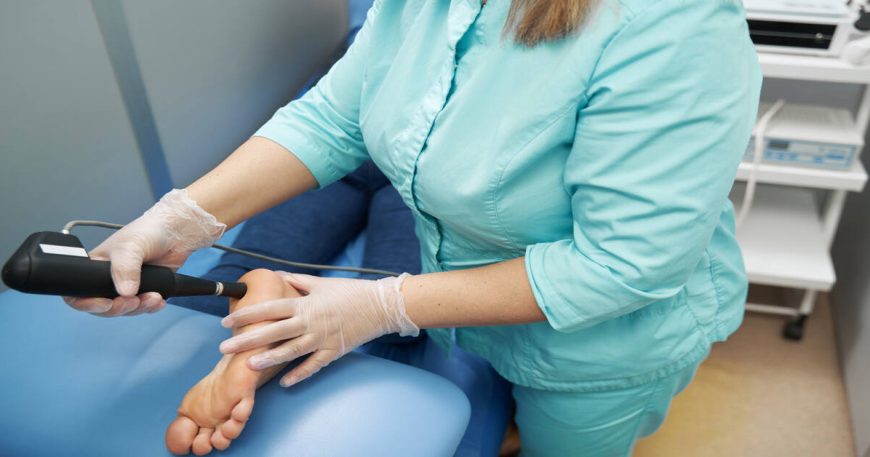
How Can Podiatrists Implement Effective Preventive Foot Care Strategies?
The need to prevent negative foot issues is central to podiatric preventive care as it ensures the best foot health and avoidance of these frequent foot issues that may greatly affect mobility and quality of life. Since our feet form the basis of our body, they should be attended to and taken care of so as to remain healthy in our lives. This blog examines preventive care strategies that will be effective in the field of podiatry and how people can make proactive measures to prevent foot complications.
Understanding the Importance of Preventive Care
Foot health is not given great attention until there is an issue but most of the problems associated with feet can be avoided with proper maintenance and care. Plantar fasciitis, bunions, and diabetic foot ulcers are conditions that may build up over time and result in chronic pain, poor movement as well as complication in case of untimely treatment. Preventive care is both regular assessment, education, and change of lifestyles of people who can prevent such problems and have good feet
The Benefits of Preventive Care
- Early Detection: Timely foot examinations have the ability to identify any issues in time hence preventing issues in a timely manner.
- Prevention of Injury: Biomechanical issues can be resolved, and people should be taught about proper footwear and exercise in order to decrease the risk of being injured.
- Cost-Effective: Prevention is more affordable than cure in many instances. Early-stage intervention would save patients the cost of costly treatment and surgery subsequently.
- Improved Quality of Life: When feet are healthy, it leads to better health in general, as one is able to be active and involved in their lives.
Strategies for Optimal Foot Health
1. Regular Foot Assessments
It is important to have a qualified podiatrist perform regular assessment of the feet with the aim of detecting any possible concerns in good time. Through these examinations, the podiatrists will be able to examine the foot structure, look into abnormalities, and determine the overall foot functionality. More frequent assessments may be required by people with an increased risk like diabetic people or with a history of foot issues.
2. Proper Footwear
One of the most effective methods of keeping the feet healthy is by putting on the right shoes. Good footwear must include enough support and cushioning, as well as fit very well. These are some of the guidelines when choosing the right shoes:
- Choose the Right Size: Shoes must be just the right fit neither tight nor sluggish. It is also necessary to frequently have your feet measured because foot size may vary with time.
- Consider Arch Support: Individuals with high arches or flat feet may benefit from shoes with specific arch support or custom orthotics.
- Avoid High Heels: High heels, though cool, are a cause of several foot ailments such as bunions and plantar fasciitis. Shoes that have a lower heel and a wider toe box are more comfortable to wear.
- Rotate Footwear: Replacement of shoes regularly may help distribute the load evenly all over the feet and decrease the chances of overuse injuries.
For a deeper understanding of how shoe structure affects foot function, practitioners can explore the latest scientific insights into foot biomechanics.
3. Foot Hygiene
Maintaining proper foot hygiene is essential for preventing infections and other foot problems. Here are some hygiene tips:
- Wash Daily: Wash your feet daily with soap and water, and make sure to dry them thoroughly, especially between the toes.
- Moisturize: Rub a nice moisturizer over the skin to prevent it from drying and cracking, but not between the toes so that the chances of fungus are reduced.
- Trim Toenails: Trim toenails straight so that they do not grow into toenails. Provided that you have a difficulty in this, then you may consult a podiatrist.
4. Exercise and Stretching
Regular exercise and stretching can improve foot health by enhancing strength, flexibility, and circulation. Consider incorporating the following activities into your routine:
- Foot Exercises:The foot muscles can be strengthened and the balance is improved by simple exercises like toe curls, ankle circles and calf raises.
- Stretching: The calf muscles and Achilles tendon should be stretched to prevent tightening and avoid the development of such conditions as Achilles tendinitis.
- Low-Impact Activities: Low impact activities include swimming or cycling to keep the body fit without subjecting the feet to too much work.
5. Managing Underlying Health Conditions
People with chronic illnesses, like diabetes or arthritis, ought to collaborate closely with their healthcare practitioners to be able to manage the conditions. Development of complications affecting the foot health like neuropathy can be averted with proper management, or lack of proper circulation.
6. Education and Awareness
Learning about foot care and usual conditions will help you to become more active. Understanding of the signs and symptoms that can be a pointer of problems with feet is important. Consult the doctor in case of persistent pain, swelling or color or temperature of skin changes.
Conclusion
Foot care is important in preventing and ensuring the effective health of the feet as it assists in preventing foot problems that are common. It is possible to prevent your feet and improve your well-being by taking proactive measures to protect your feet and promote good health by adding regular examinations, appropriate footwear selection, good hygiene skills, physical activity, and education to your daily routine. It is important to remember that active and complete life begins at the feet.
Frequently Asked Questions (FAQs)
1. How often should I see a podiatrist for foot assessments?
One is advised to visit a podiatrist at least once in a year to have their feet checked. Nevertheless, patients who have other conditions like diabetes or foot issues might be required to visit with a more frequent frequency, as recommended by their health practitioner.
2. What are the signs that I should see a podiatrist?
A podiatrist should be seen in case of chronic foot pain, swelling, skin color or temperature changes, ingrown toenails or discomfort when walking or standing. Damage can be averted by early intervention.3. Can foot problems be prevented?
Yes, there is a lot of prevention of foot problems through care and attention. Foot examination, proper footwear, good hygiene and physical exercising can also help a lot in reducing the chances of developing foot disorders.




